Do you ever feel super hungry after an intense workout or yoga session? There’s a reason for that! It takes a lot of work to nourish an athletic body. Most athletes and weightlifters require specific diets to nourish and support their bodies. Without these diets, it’s harder to maintain an active lifestyle.
The same is true for yoga! Yoga is a complete system designed to help you create union with your True Self, through meditation and other practices. There is a small part of yoga that also involves physical asanas or poses, which is the part of yoga that Westerners tend to associate with yoga. We greatly respect the entire system of yoga, and the deeper parts of yoga and self-connection are what my new book is about, You Are More Than You Think You Are.
For the purposes of this article, we will be talking about yoga in relation to the physical poses and movement.
Yoga asanas or poses are great exercise, but they benefit your body in other ways too. Yoga provides stress relief, more energy, mindfulness, and helps detox your body through sweat.
To get the most out of your yoga practice, I encourage you to eat a diet that is supportive like our Beauty Detox/Solluna lifestyle that nourishes your body and mind the right way.
Yoga nutrition can help support a healthy and energetic body and a clear, peaceful mind. It can also give your digestion an amazing boost. So if you ever needed another reason to start a yoga practice, this is a great one! :)
Why Nutrition Matters to Your Yoga Practice
Healthy eating is the key to healthy living. Everyone knows the old adage “you are what you eat.” But I don’t think that’s quite accurate. I think it should be “you are what you digest and assimilate!”
When you eat healthy, nourishing foods, your digestive tract can do its regular job of digesting your food, and can help cleanse your body of toxins and waste. Yoga nutrition adds to this— taking the mental and spiritual aspects of your food into consideration too.
Nutrition is a key component in both yoga and Ayurveda. That’s because it’s connected to three energies that are found in your everyday life. These energies— or gunas— are also known as sattva, rajas, and tamas. With healthy, mindful eating, you can keep your body energetic and healthy, and your mind sharp. The best way to do this is to eat plenty of certain foods while avoiding others.
Sattvic Food
In Ayurveda, there are certain foods that are known to boost your energy, clear your mind, and make you calm and happy. These are known as sattvic food. A few examples of sattvic food include:
- Fresh fruit
- Fresh vegetables
- Whole grains (sprouted and unsprouted, and ideally gluten-free)
- Nuts
- Seeds (sprouted and unsprouted)
- Legumes
- Herbal tea
A sattvic diet is very important to yoga nutrition. It helps keep your mind clear, your body energetic, and your overall health in balance.
Rajasic Food
Rajasic foods are associated with decision-making, energy, and positive aggression. Like, a “go-getter” attitude for you to seize the day and get things done! :) However, rajasic foods are also connected to restlessness, and eating these foods in excess may make you more likely to feel restless— including meat and animal products. That’s why it’s best to eat these foods in moderation.
Some examples of rajasic food include:
- Spicy, bitter, or pungent foods
- Unsprouted pulses like lentils
- Spices like chilis or black pepper
- Foods like onion and garlic
Tamasic Food
On the other end of the spectrum, you have tamasic food. These are associated with a lack of energy and even weakness. These foods can drain your energy and dull your mind. Some of these include:
- Unripe or rotten food
- Processed food
- Alcohol
- Some fermented foods, such as vinegar
Some of these foods— like meat and processed food— should be avoided entirely if possible. Others— like fermented foods— are fine in moderation. Some fermented foods are actually great for your digestion, such as raw sauerkraut. Some, like dairy cheese, are best avoided! Use your discernment here for sure!
Trust Your Body
In short— for the best yoga nutrition, eat plenty of sattvic food while keeping rajasic and tamasic food in moderation. But don’t worry if your yoga diet isn’t quite where you want it to be yet.
Your body knows what healthy food it needs. But sometimes it takes a little time to eat more of the foods you need, and less of what you don’t. But don’t worry Beauty— with a little mindfulness, intuitive eating will become like second nature. Just be gentle with yourself. :)
5 Foods That Can Take Your Yoga Practice to the Next Level
So now that we’ve talked about the kinds of healthy foods you can eat in a yogic diet, let’s look at 5 specific foods that are especially great for your yoga practice. These 5 foods are packed with vitamins and nutrients that can fuel your body and nurture a clear mind.
1. Quinoa
Quinoa has become a very popular health food in recent years. I think that reputation is well-deserved! That’s because quinoa is a complete protein, and it’s full of vital amino acids. It’s also a great source of fiber, and can help keep you fuller for longer. This can be very helpful for weight loss, and it can help reduce your cholesterol and blood sugar levels.
Quinoa is also rich in antioxidants, which can rid your body of free radicals that can make you sick.
2. Kale
Kale is another beauty food that’s become popular recently. Kale is a low-calorie, fiber-rich vegetable that’s packed with vitamins, nutrients and antioxidants.
This amazing leafy green is full of vitamin C and beta carotene, as well as nutrients like lutein and zeaxanthin. These are great for your eye health.
3. Chia Seeds
Chia seeds have a huge amount of health benefits packed into a teeny tiny package. When you mix them with water, they create a nutritious gel that gives you wonderful energy and a digestive boost.
These amazing seeds are full of healthy fats like omega-3 and omega-6 fatty acids. Chia seeds are also rich in both soluble and insoluble fiber, which is great for your digestion and can help you maintain a healthy weight.
4. Millet
Millet has been cultivated around the world for thousands of years! That’s because it’s super nutritious and has a ton of health benefits.
Millet is rich in nutrients like niacin, potassium, iron and beta carotene, which can help your body fight off disease. It’s also rich in both soluble and insoluble fiber just like chia seeds.
The insoluble fiber in millet helps add bulk to your stool, which keeps you regular. It can also help reduce the bad cholesterol in your body while raising good cholesterol levels.
5. Hemp Seeds
Like the name says, hemp seeds are seeds from the hemp plant. But unlike the leaves on the hemp plant, the seeds don’t have the same mind-altering properties. However, these seeds are great sources of healthy fats, and protein.
Hemp seeds are rich in omega-3 and omega-6 fatty acids. They’re also high in nutrients like vitamin E, potassium, calcium, iron, and zinc.
Because of these health benefits, hemp seeds can help reduce your risk of heart disease and diabetes.
All these foods are considered sattvic foods and are vital for healthy energy. Not just physical energy, but your mental and spiritual energy too.
How Yoga Boosts Your Digestion
Yoga isn’t just great for a strong and toned tummy, Beauty. It can also keep your tummy and digestion healthy! That’s because all the twists and turns from yoga stimulate your digestion and help make eliminating waste easier.
The stress-relieving and anxiety calming properties of yoga and meditation are well-known. Stress and anxiety can cause digestion problems. So not only can yoga help with digestive upset caused by stress, but it can also ease digestive symptoms like bloating, cramping, and gas.
This is because your digestive system and your brain are connected by what’s called the gut-brain axis. This connects your digestive system to your brain and helps the two communicate.
Because of this, your gut health can be directly impacted by a stressed and anxious mind. This can cause unpleasant symptoms like stomach aches, nausea, changes in appetite, and even diarrhea and constipation.
However, outside of relieving stress, yoga can help your digestion by increasing your GI tract’s motility, and increasing circulation.
Yoga and Digestive Disorders
Multiple studies have found that practicing yoga is effective in treating digestive disorders.
In one study, 208 participants with irritable bowel syndrome (IBS) were instructed to do yoga for 12 weeks or follow a low-FODMAP— sugars that cause digestive distress— diet. At the end of the study, both groups showed improvement in their symptoms. [1]
Along with a healthy diet, yoga can complement treatment for disorders like IBS, Crohn’s disease, and ulcerative colitis.
3 Simple Yoga Poses for Better Digestion
Excited to pull out your yoga mat, Beauty? Don’t have one yet? Don’t worry! :) Here are three simple yoga poses you can do to improve your digestion— even if you’re an absolute beginner to yoga.
Child’s Pose
Child’s pose is wonderfully restorative. That’s why you always use it to rest— especially after an invigorating session!
Child’s pose activates your parasynthetic nervous system— or your “rest and digest” response. This is the exact opposite of your sympathetic nervous system— which activates your “fight or flight” response. It also helps your body conserve energy and regulates bodily functions like your digestion. [2]
For all our new yogis, here’s how you do child’s pose:
- Sit on the floor— or your yoga mat— with your knees wide and your toes touching.
- Lower yourself and rest your forehead on the floor. Your stomach should be between your thighs.
- Extend your arms forward, palms facing the floor.
- Hold for at least one minute. Feel the stretch from your hips to the tips of your fingers.
Cat-Cow
This is actually two poses— cat pose and cow pose. These are great for stretching your back muscles and your belly muscles. Not only that, but these poses can massage your organs and encourage healthy gut peristalsis, or digestive movement.
Here’s how to do these two beneficial poses:
- Begin on your hands and knees, with a flat back and neck. Your wrists should be aligned with your shoulders, and your knees aligned with your hips. This is your neutral position.
- To enter cow pose, tilt your pelvis to where your belly goes down and your tailbone goes up. Gently bring your shoulders back, and slowly look upward.
- Hold this for 30 seconds before returning to the neutral position.
- To enter cat pose, draw your belly in towards your spine and roll your shoulders forward. Your back should be arched after this. Lower your head, looking towards your mat. Let gravity control this.
- Hold for 30 seconds before returning to the neutral position.
- Repeat a few times, or as needed.
Seated Twist
This pose is amazing for your digestion, Beauty! That’s because it massages your internal organs, increases blood flow, and helps get things moving.
Here’s how to do it:
- Sit on your floor or your yoga mat, legs in front of you.
- Cross one leg over the other. Make sure this foot is by the opposite knee.
- Bring your other elbow around your knee. Gently twist your midsection.
- Make sure your spine is straight and lengthened.
- Hold for 30 seconds, then switch sides.
Along with your normal yoga practice, I recommend incorporating a few stretches into your morning routine. This will help you start your day off a little lighter, calmer and more centered.
Looking for more easy yoga poses? Check out these 12 poses that anyone can do!
Namaste Healthy!
We all know the importance of good nutrition with a healthy lifestyle. But a healthy lifestyle isn’t always something that happens overnight. In our perfectly imperfect lives sometimes we don’t always eat the way we want, or do as much yoga as we want. And it’s okay if it happens sometimes— just keep calm and carry on, Beauty.
Don’t give up and don’t get discouraged.
Looking for an amazing yoga course to boost your energy and overall health? Check out my beauty detox yoga series! Whether you’re a beginner or more experienced, this series will help you not just embrace the physical benefits or yoga, but the emotional and spiritual aspects too.
Namaste!
With much love and gratitude for you,
Citations
- Sharma, Purnima, et al. “Effect of Yoga-Based Intervention in Patients with Inflammatory Bowel Disease.” International Journal of Yoga Therapy, U.S. National Library of Medicine, 2015, pubmed.ncbi.nlm.nih.gov/26667293/.
- Tindle, Jacob, and Prasanna Tadi. “Neuroanatomy, Parasympathetic Nervous System.” StatPearls, U.S. National Library of Medicine, 5 Nov. 2021, www.ncbi.nlm.nih.gov/books/NBK553141/.


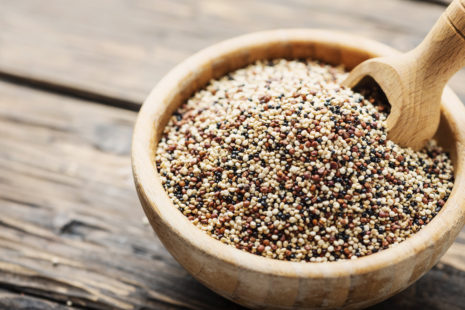
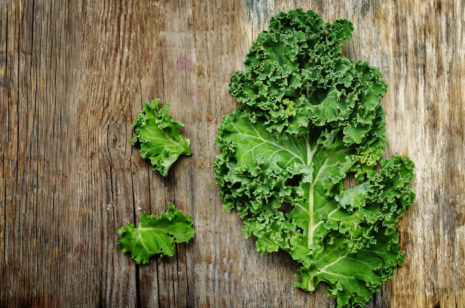
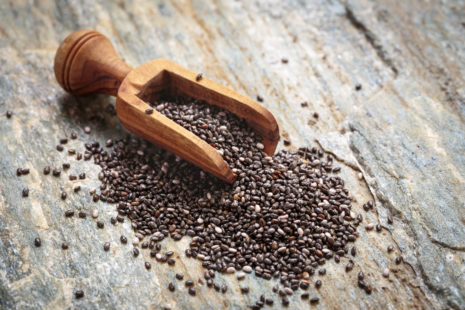
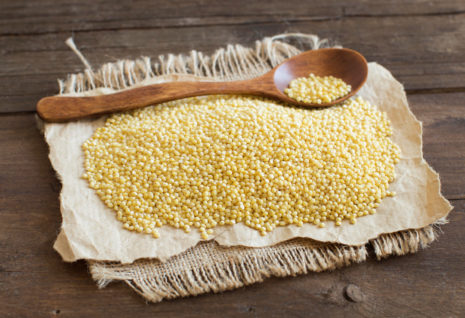
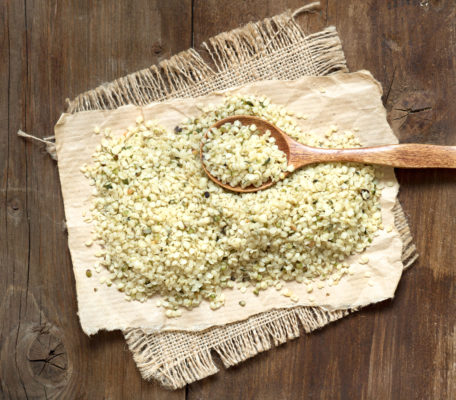





Thank you! 💕
Lots of love Karen! Xo
Using solluna probiotics and digestive enzymes has helped a great deal with my staying gut healthy during my shoulder injury and surgery. Hope to try yoga moves in the future!
I have just begun doing yoga I try three times a week but usually only twice working up to it.ty for these tips. Very helpful. I usually don’t eat before I do my yoga.
Thanks love and so happy to hear you’re on this yoga journey. Keep up the great work and sending your lots of love Gillian! Xo